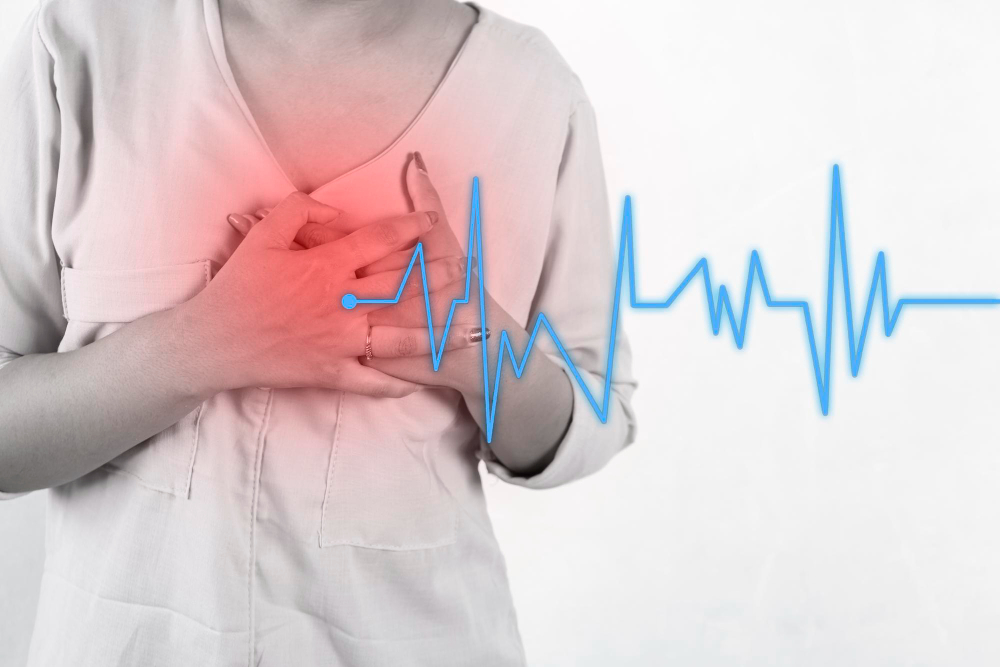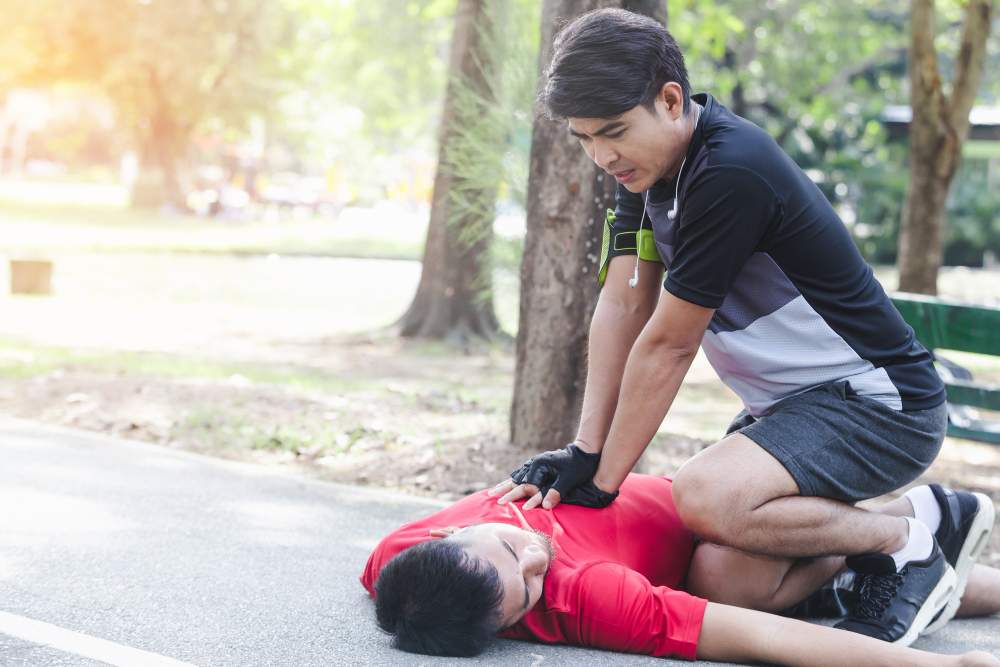
Get CPR training for your team!
If you have any questions feel free to email us at info@emccprtraining.com
CONTACT ONE OF OUR EXPERTS HERE

Last Updated on January 28, 2024 by CPR Training
What is cardiac arrest, you ask?
Well, let me tell you, it’s not a topic to be taken lightly.
Cardiac arrest is a medical emergency that could suddenly strike any person anyplace.
The consequences could be dire if you don’t know what it looks like or how to respond effectively.
It is a serious heart condition that can strike without warning.
This sudden halt in pumping blood causes people to lose consciousness and requires immediate medical care by a healthcare provider or hospital staff; otherwise, most victims outside of a hospital die from it.
Mistakenly people confuse cardiac arrests and coronary heart disease (CHD), also known as a heart attack, are one and the same; however, they are two distinct conditions.
In reality, they are different conditions: CHD typically presents symptoms like chest pain or vomiting chest pain caused by blocked arteries which restricts blood flow and damages the heart muscle over time, while cardiac arrests happen suddenly when your heartbeat becomes irregular, causing you to pass out within seconds if not minutes because there’s no oxygen-rich blood reaching your brain.
Besides losing consciousness abruptly, other signs may include shortness of breath with palpitations before collapsing entirely, making this situation distinct from those experiencing coronary artery diseases, which usually feel discomfort rather than passing out immediately after feeling unwell.
We’ll examine how to best respond during these emergencies next. Stay tuned.
The moment someone suffers a cardiac arrest, time becomes the enemy.
Cardiopulmonary resuscitation (CPR) is crucial in these situations, and knowing how to perform it can save lives.

If you notice someone suddenly losing consciousness and not breathing normally, start CPR immediately.
This involves chest compressions and rescue breaths that help keep blood flowing until medical care arrives.
Beyond CPR, using an automatic external defibrillator (AED) dramatically increases survival rates of cardiac arrests outside hospitals, where most people, unfortunately, die due to a lack of immediate response.
The importance of being prepared for cardiac emergencies cannot be overstated.
Why?
The harsh reality is that most people who suffer a cardiac arrest outside a hospital die.
This is where Automatic External Defibrillators (AEDs) come into play.
You see, AEDs save lives by restoring normal heart rhythms in individuals experiencing cardiac arrests.
To ensure your team can respond effectively to such an emergency, consider incorporating onsite CPR and AED training programs from reputable companies like EMC CPR & Safety Training. Whether you choose a full classroom or blending learning option, we got you covered.

Beyond this immediate response preparation, promoting overall heart health within your organization can help reduce risk factors associated with heart attacks and cardiac arrests.
You have the power -and responsibility- to protect your workforce from life-threatening situations like sudden cardiac arrest through effective planning and education initiatives.
Remember – every second counts when pumping blood stops flowing.
.png)
It is a sudden loss of heart function, breathing, and consciousness. It typically results from an electrical disturbance in your heart that disrupts its pumping action.
The four types include ventricular fibrillation, pulseless ventricular tachycardia, pulseless electrical activity, and asystole.
Most commonly, coronary artery disease leading to a heart attack can cause cardiac arrest. Other conditions like arrhythmias, drug abuse, or a complication of acute ischemic stroke may also trigger it.
What is cardiac arrest? It is a silent predator, striking when least expected.
We’ve walked you through its signs and symptoms. Realizing the indicators may be the distinction between existence and demise.
You now know how to respond swiftly – with CPR or an AED. These tools can save lives in those critical moments after it strikes.
Your workplace should never underestimate the power of preparedness. With onsite training through AHA, ARC, or HSI, your team will be ready for any heart health emergency that comes their way.
Remember what we learned about cardiac arrest today: it’s sudden and serious, but being equipped with knowledge makes all the difference!
Contact us at www.emccprtraining.com/contact or 800-695-5655 to learn about our onsite CPR/AED training and AED sales.
Get CPR training for your team!
If you have any questions feel free to email us at info@emccprtraining.com
CONTACT ONE OF OUR EXPERTS HERE